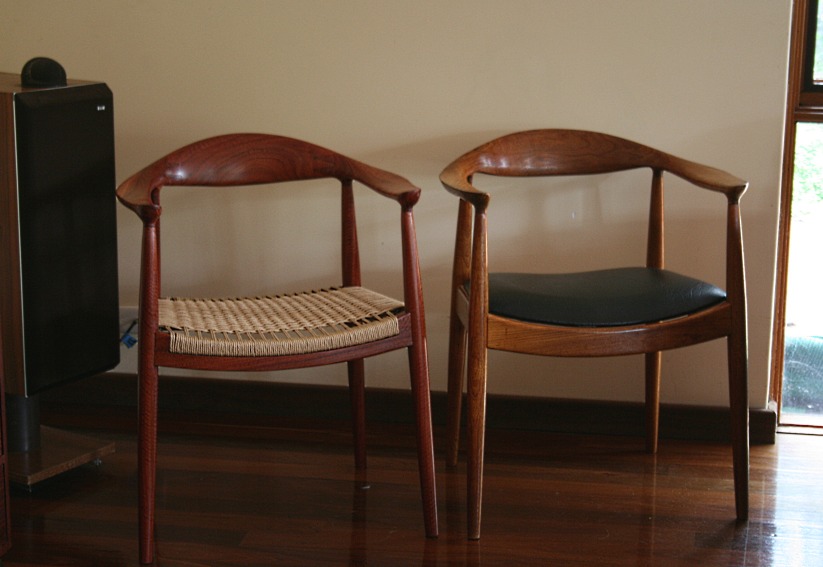I am building dining room chairs (and a dining room table), and the chairs will be similar to the one below. It has been fun designing and dimensioning
The legs are both curved and have an elliptical profile. Because of this, they cannot be turned on a lathe. I have created a template, partly for marking out and partly a potential pattern for a router table.
Here is the "however" ... the wood is Rock Maple (or Hard Maple) and I have never routed this with pattern bits. I have read that it is not a good choice of wood for this method (tending to blow out and blow up at the suggestion of cutting into the grain).
When it comes to shaping, my preference is to use hand tools ... spokeshaves, etc. I have build a similar chair completely with hand tools in the past, an exact copy of Hans Wegner's "The Chair", even copying the mortice and tenon joinery with hand tools. This is a piece of furniture built in the factory with lathe copiers.
Mine on the left, original on the right ...
When it comes to the dining chair, you can see that I like the style
So ... shape the legs with spokeshaves, or what router bit and method can be suggested?
Regards from Perth
Derek









 Reply With Quote
Reply With Quote





